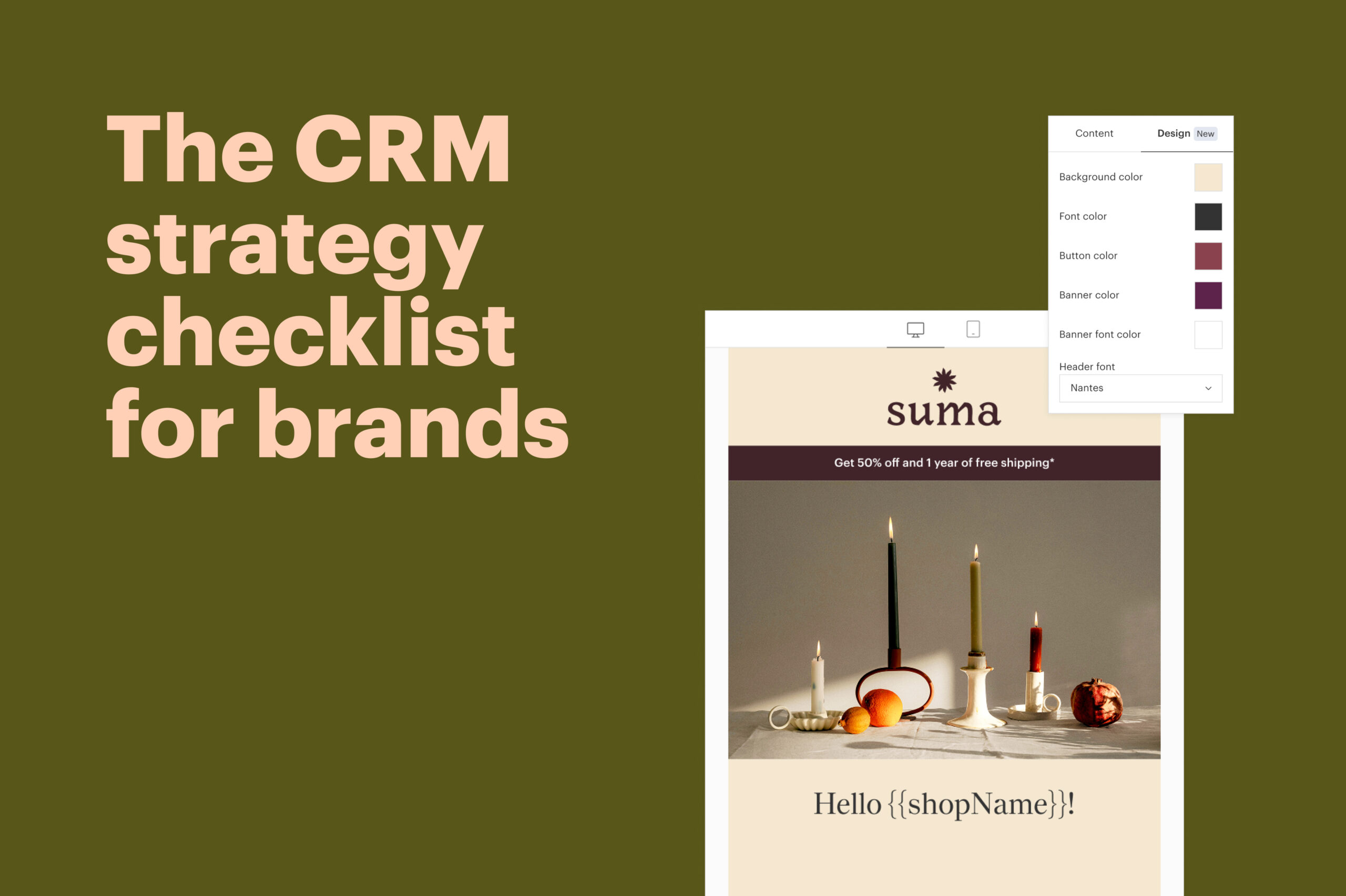

As the creators and founders of All You Need Method, Carla Nikitaidis and Kathryn Humphries know the power of lasting brands. Over the past two decades, the two of them have worked across PR, marketing, and social media with such time-tested names as Gap, Williams-Sonoma, and Target.
But what they’re most passionate about is their work with hundreds of small business owners and start-up founders, often teams of one or two, whose success as a business hinges on the authenticity of their brand. These collaborations inspired the duo to start the seven-step All You Need Method, which gives creators the tools to build a beloved brand. Because in those early stages, each touchpoint is an opportunity to connect, gain trust, and establish the kind of loyalty that not only keeps customers coming back but also inspires them to tell everyone else about you.
Today, we’re sharing six of their most powerful tips to help you sharpen both your own and your business’s brand—which are equally important for lasting impact.
1. Invest in your brand foundation
As a society, so much of what we do is online, which has forced even brick-and-mortar shops to evolve their brand strategies to include every digital opportunity that comes along: In short, a savvy business is also a digital business. As such, your brand shows up more often, and in more places, says Nikitaidis, which means “building a brand foundation is the number one investment you can make.” And it’s not something you do once, she says. “It’s very much an evolving mindset.”
A brand foundation is not to be confused with a brand identity or logo. It’s more about being crystal clear on what your brand stands for:
- What is your mission?
- What is your bigger vision?
- What are your values as a company?
- Why are you different from all those other brands in your industry?
- What is your founding story?
“Turning the answers to these questions into a differentiated, nuanced story is what brings intangible value to your business,” says Nikitaidis, “and it’s more important now than ever.”
2. Grow your audience without overspending
There’s a lot you can do to grow your brand without outsourcing, and it all starts with that brand foundation. “So many small business owners skip this step for ‘exciting’ things like influencer collaborations and PR,” says Humphries. But she suggests taking this opportunity to start with a brand audit. Look at your website and across your social channels and marketing materials and ask yourself:
- Am I describing myself consistently across all platforms?
- Is it super clear what I stand for as a business?
- How can I serve my target audience?
- What makes me different from the competition?
- Do my photography, logo, fonts, and colors represent my brand vision?
Grounding yourself in these questions helps you recognize what you and your brand stand for when it’s crunch time. “This adds a lot of clarity when you’re time-strapped or have multiple opportunities coming at you quickly, and you aren’t sure what to say yes to and prioritize,” says Nikitaidis. “Having a mindset of quality over quantity is essential, especially when posting online.”
From here, social media’s various outlets are very powerful. “TikTok is a huge chance for you as the founder of your business to establish yourself as an expert and get in front of a wider audience,” says Humphries. “Pinterest is also a huge traffic-driver that can get overlooked, but it’s low-hanging fruit.” Pin everything—product images, blog posts, Instagram photos—and link it all back to your website.
Lastly, Humphries suggests, grow your network and build your brand on LinkedIn. “It’s a great way to connect with potential partners and other business owners, share company announcements, elevate yourself as the founder of your business, and join other small business groups.”
3. Leverage your personal brand
At the core of a successful online presence is human connection, and building personal rapport with potential customers goes a long way. “Whether you’re a small business owner, just starting out at a company, or are an executive, everyone benefits from working on their personal brand,” says Nikitaidis.
This includes being clear and thoughtful about your areas of expertise. What is the unique skill set and/or point of view that you bring to your industry and community? “As a small business owner, it could be talking about entrepreneurship or sharing your founding story,” says Nikitaidis. “Whatever it is, it allows you to get credit for being yourself.”
Humphries agrees: “It’s your biggest differentiator,” she says. “After all, there is only one you.” If you’re in the wellness space, it’s going to be crowded. If you’re in the home and entertaining space, it’s packed. “But your story is unique. The more you can share and leverage that, the more you’re going to stand out.”
4. Be a partner (not just a vendor)
The holidays are a hectic season for small business owners as well as consumers, who are inundated with options. “Use the season to service your target audience,” says Humphries. “What do they need right now? What would inspire them?” Once you have that defined, marry it with your category and areas of expertise. For example:
- If you’re in wellness, offer tips for how to have a healthy home during the holidays
- If you’re in home and entertaining, share hosting tips
- Create a relevant gift guide that not only showcases your products but also those from other brands you respect
“Instead of just pushing sales, you’re creating a story in the holiday narrative for your product and offering your target audience unique value,” Humphries says. During a time when everyone’s customer is being bombarded with newsletters and Instagram posts, they’ll be especially grateful for something thoughtful and authentic.
5. Connect with meaningful influencers
Many small businesses that don’t have the budget for paid partnerships have great success working with social media influencers in an organic, unpaid capacity: That is, gifting your product so they can try it out and (hopefully) post about it to their followers.
Humphries has a few tips on how best to go about this. “First, be thoughtful about who you’re reaching out to, and how,” she says. “This is a chance to target a curated list of people you genuinely love following and who you think are an authentic fit for your brand.”
Once you’ve got your list, think through your approach—because everyone can see through a copy-and-paste email. “This is a chance to build a relationship and introduce yourself,” says Humphries. “Give them specifics about why you want to work with them and go from there.” This sets the foundation for a long-term relationship in which you work together for months and years to come.
Next, Humphries says, “be generous with your gifts and reasonable with your expectations.” Influencers make money through paid posts, but most small businesses can’t pay thousands of dollars for such an endorsement. “Let your influencer choose the product they’re most interested in, or tailor a list of 10 items for them to choose from and send them their top choice.” Just as your brand is unique and distinctive, so is each influencer. “Identify a specific objective and idea in mind for each influencer depending on their skill set and following,” suggests Humphries.
6. Conduct a yearly brand audit
When you run a small business, it can be exhausting to wear every hat, especially specialized ones like PR, marketing, and social media. “We’re all running a million miles a minute, but it’s important to step back and reassess your business goals,” Nikitaidis says. Whether it’s quarterly, annually, or otherwise, take the time to ensure all your efforts are laddering back up to your goals.
“This ties back to investing in and continuing to revisit your brand foundation: It ensures you’re supporting those bigger objectives.” Nikitaidis loves an annual brand audit, especially before stepping into a new year. “Take time to think about how you want to show up in your industry and as a founder in 2023.”
To get you started, Humphries and Nikitaidis suggest their handy brand audit checklist. The tool will guide you through simple but hard-hitting questions so you can tackle the holidays and 2023 with strong foundational goals and a clear vision of what you want to be known for—both as a beloved brand and as a founder.




